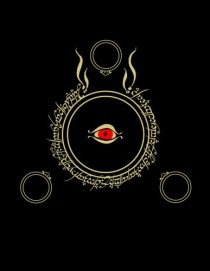Tale as Old As Time: How Fantasy Has Changed
by Courtney Vice
We all remember our first fantasy experience. Whether you were binge-reading Tolkien nestled in between the bookshelves at your local library or was fascinated with the mythical world of Harry Potter when you first saw Daniel Radcliffe’s glasses clad face on the big screen, fantasy had a way of slipping a little magic and mystique into our lives without us even realizing. As someone who grew up wanting to be an elf-wizard-barbarian hybrid, I know just how much the fantasy genre can impact one’s life. However, what we rarely think about is how our own magic-less society affects fantasy. Yes, humble Nord, you influenced these mythical worlds without even realizing it just as they influenced you.
To truly understand what I mean, we have to look at the history of the fantasy genre as a whole and how it has changed. From the beginning, we had the traditional hero, damsel in distress, and evil villain tropes. The hero was generally a muscular, handsome young man, gifted with either amazing strength, magical ability, or plain courage chosen to take on a heroic quest. The damsel in distress was, first and foremost, beautiful and, secondly, helpless. The evil villain was, well, evil and wanted power, money, and recognition. Novels such as Beowulf followed this traditional layout; it was exciting to read without becoming too complex. Readers, who were usually male, could imagine themselves as the hero, overcoming all odds, beating the bad guy, and winning the girl. However, this was just the beginning of an evolving genre.
Soon, we saw characters that we would not traditionally root for taking center stage. The best example of this is The Lord of the Rings. After all, who would expect Frodo Baggins—a short, big-footed, and somewhat timid Hobbit—to be the one to take the ring to Mordor and exhibit the same bravery we knew in past heroes? The reason for this shift is simple: reliability. It is one to escape into a character, but it is another to relate to them. It can even be argued that Frodo’s wise-cracking sidekick, Samwise Gamgee, was the true hero of the series instead. How drastic of a change!
Female characters have also changed. The Lord of the Rings’ predecessor, The Hobbit, didn’t do much for women, as it didn’t have a single female character, but the introduction of Galadriel in The Fellowship of the Ring solidified just how fantasy was changing. While still being beautiful and settling to the side of the main objective, they were becoming powerful helpers to the hero’s quest. Galadriel’s cry of “all shall love me and despair” showed just how powerful and strong these female characters were becoming, though their experiences were still largely dependent on their male counterparts.
Villains were also changing. There was sympathy for the bad guys. While there was still the overlying idea of good vs. evil, even evil characters had motives. They thought they were doing good and were fighting for their own cause just like our heroes were. In the end, the idea of “we aren’t so different after all” began to surface. However, just like in the old stories, there was always a happy ending, although it did not come with the same amount of ease.
Nowadays, fantasy has maintained some aspects of its gifted ancestors, but with a twist. Take, for instance, the A Song of Ice and Fire series. Villains are not entirely clear cut evildoers who want death to all good and love—though, I mean, pushing a kid out of a window might be in the “clearly evil” category. Death of major characters is normal, if not expected (though with tearful eyes and the ceremonious “How could you do this to us, George!?”) Heroes came in all shapes and sizes—looking at you, Tyrion—but even their morals were not up to the gold standard of heroism and bravery we had known. Females were not only taking charge, they were taking names and the throne.
These characters are flawed. Their worlds, while different from our own, aren’t perfect. Readers now want that; they want to to escape, but they don’t want the traditional story of a happy ending anymore. They want to see heroes fail just as they have failed and understand that even if one is an elf-wizard-barbarian hybrid, they won’t always succeed. Similarly, as women get invested in the fantasy genre as both writers and readers, female characters have adapted into much-needed stronger roles. They fight just as men do and no longer merely occupy the background as a pretty decoration.
Society wanted there to be a mythical world that had realistic characters, but still had hope. We, as readers, wanted to be able to find our own flaws in the hero but still have him succeed in the end. He no longer had to be perfect, he just had to be human. Well, not in the literal sense, but you get what I mean.
As new generations move on from paper to pen, we will continue seeing this evolving societal changes happening in our world also happening in these fictional ones. Here in our world, we do not need magic wands to change other realities; all we need is a pen.

Congrats on your post. Love Grandma
LikeLike